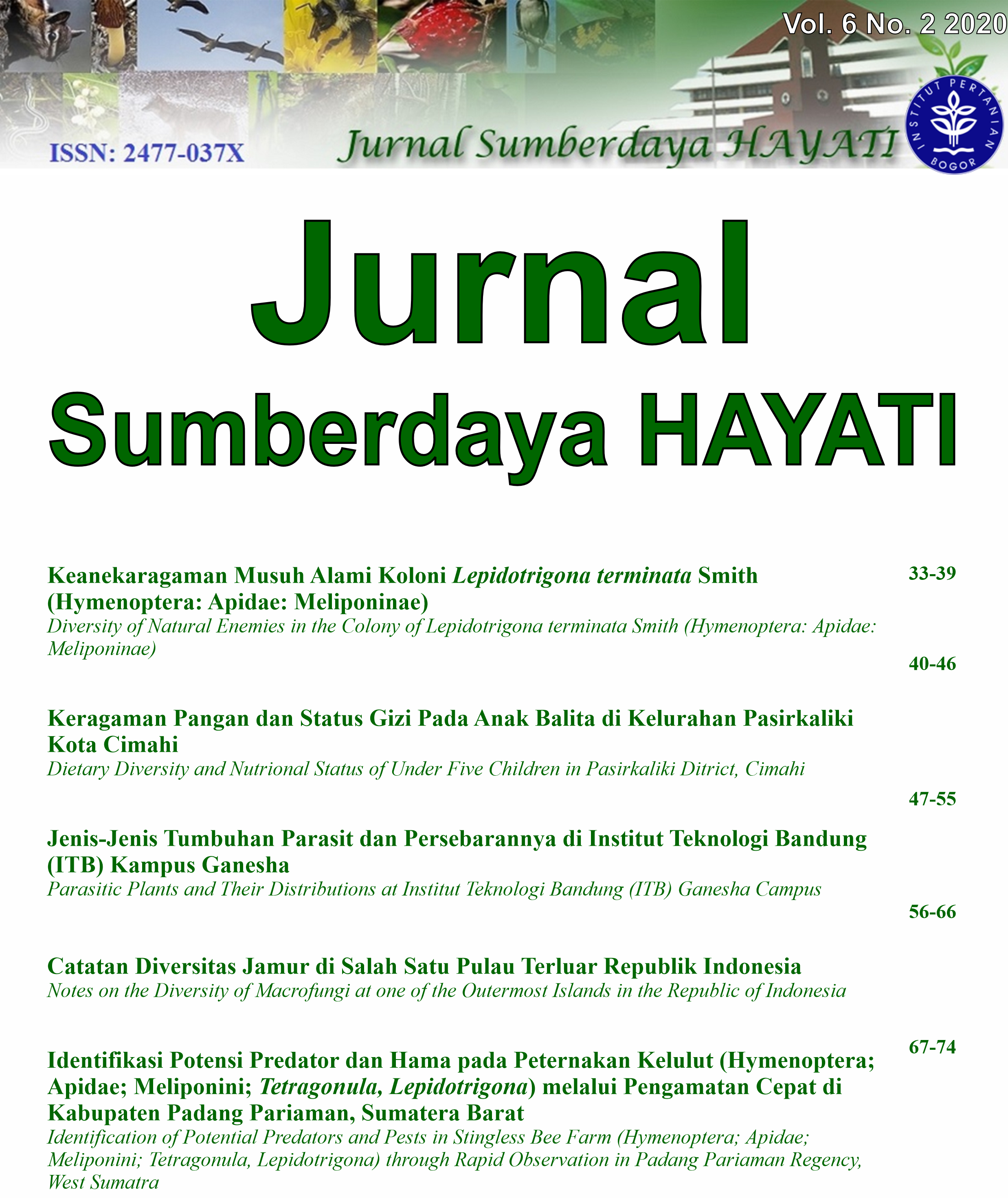Keragaman Pangan dan Status Gizi Pada Anak Balita di Kelurahan Pasirkaliki Kota Cimahi
Dietary Diversity and Nutrional Status of Under Five Children in Pasirkaliki Ditrict, Cimahi
Abstract
Dietary diversity refers to an increase in the variety of foods across and within food groups capable of ensuring adequate intake to promote a good nutritional status. The purpose of this study was to determine the relationship of food diversity with the nutritional status of children under five in Kelurahan Pasirkaliki Kota Cimahi. A cross-sectional study with a simple random sampling method was conducted among 79 households having under five age children. Individual food diversity was measured using a dietary diversity score through questionnaire from FANTA Dietary Diversity Score Indicator Guide. Nutritional status of children under five measured by anthropometric measurement with indicator z-score of WHZ, WAZ, and HAZ. The analysis was carried out by Chi square test and fisher's exact. The average age of children under five is 31 months consisting of 43 boys (54.4%) and 36 (45.6%) girls. The prevalence of wasting children was 3.8%, stunting 21.5%, and underweight 10.1%. As many as 56 (70.9%) children consume diverse foods. There is no relationship between food diversity with nutritional status (p>0.05). Consumption of diverse food with appropriate amount of food portions are recommended for children under five years to get optimal nutritional status.
Downloads
Authors who submit and publish with this journal agree to the following terms:
1. Authors retain copyright and grant the journal/publisher non exclusive publishing rights with the work simultaneously licensed under a Creative Commons Attribution 4.0 International License.
![]()













